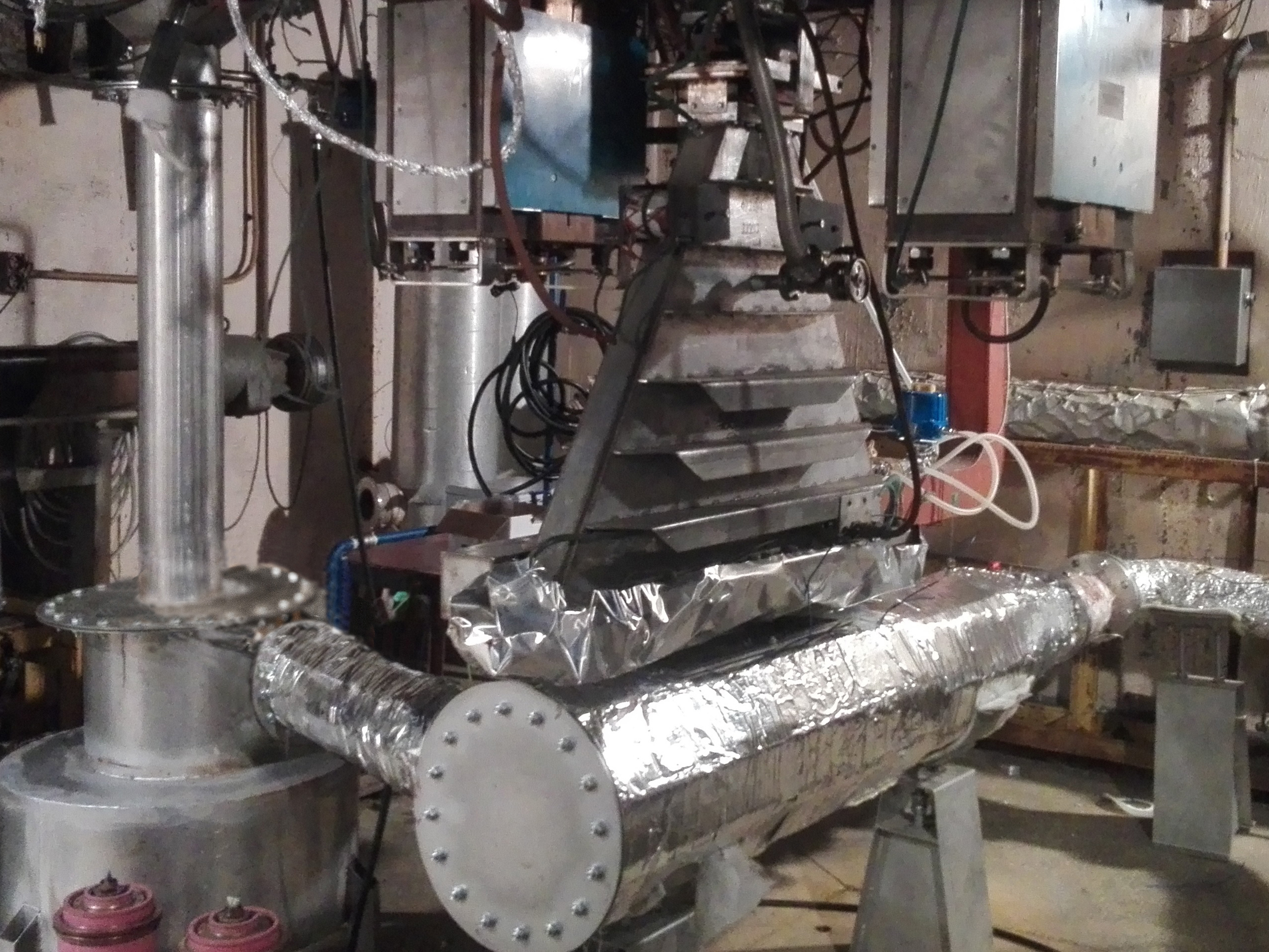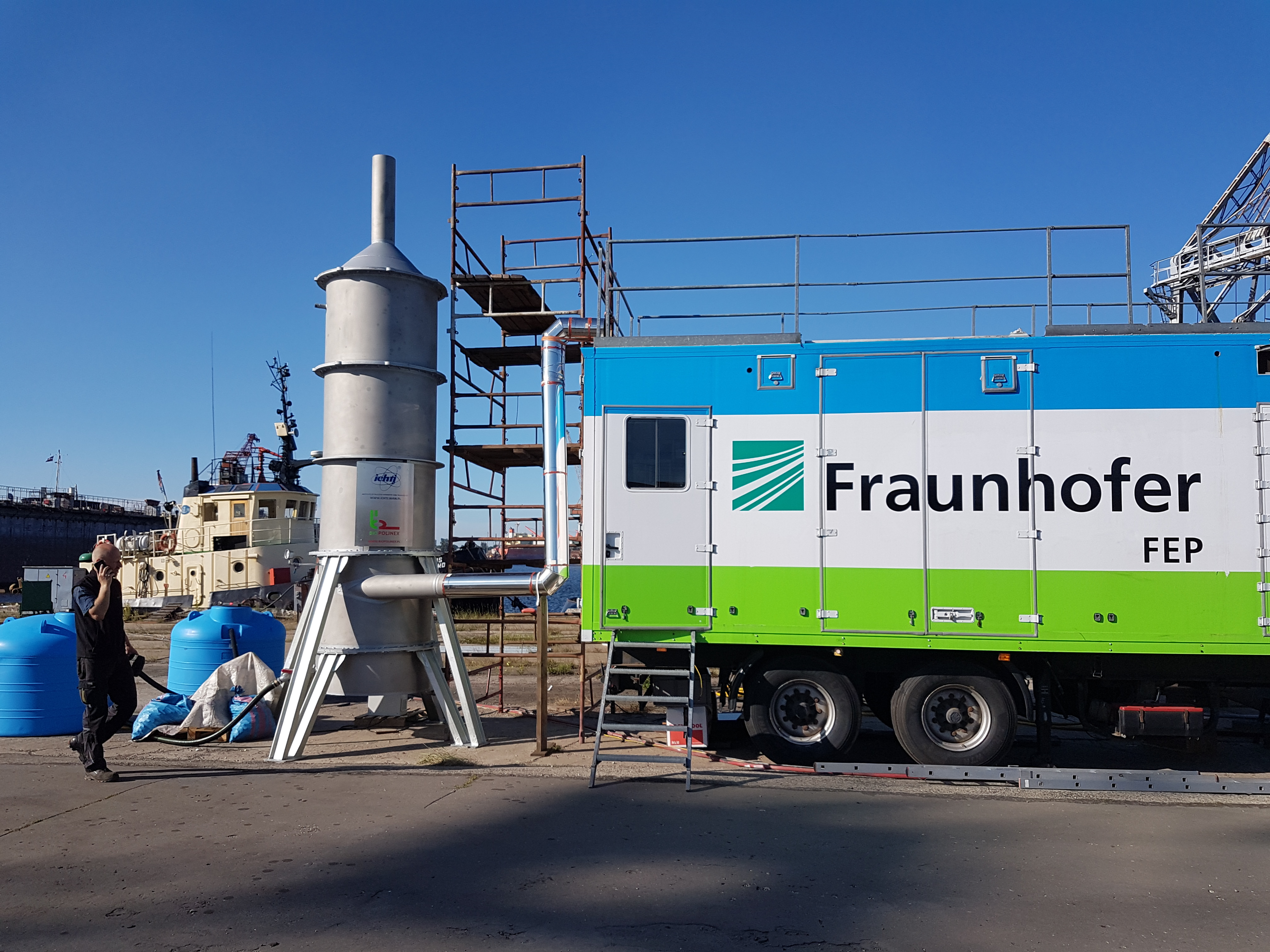Plasma technology for the removal of nitrogen oxides from exhaust gases
The basic marine fuel involves heavy fuel oils containing up to 3.5% sulphur by weight, and the combustion of these fuels in diesel engines emits oxides of sulphur and nitrogen, with concentrations of nitrogen oxides in the exhaust up to 1,700 ppmv and concentrations of sulphur dioxide (SO2) up to 700 ppmv

 Project title
Project title
Plasma technology for the removal of nitrogen oxides from exhaust gases
 Name of Beneficiary/Beneficiaries
Name of Beneficiary/Beneficiaries
- Institute of Chemistry and Nuclear Technology, Warsaw
- "Biopolinex" Sp.z o.o. Lublin
 Name of programme
Name of programme
Joint Undertaking of the National Centre for Research and Development and "Tango" National Science Centre
 Competition
Competition
TANGO
 Project value
Project value
1,295,522.47
 Funding value
Funding value
PLN 1,118,153.89
 Project delivery period
Project delivery period
from 01 June 2017 to 29 February 2020
Meet our team
- Tango 2 - Prof. dr hab. inż. Andrzej G. Chmielewski, dr hab. Yongxia Sun, prof. ICHTJ; dr inż. Andrzej Pawelec; dr inż. Ewa Zwolińska (King), dr Liang Zhao, dr Andrzej Dobrowolski, mgr inż. Sylwester Bułka, dr inż. Zbigniew Zimek.
- EU ARIES PoC (eksperyment w Rydze) - dr inż. Andrzej Pawelec; techn. Henryk Burliński, Prof. dr hab. inż. Andrzej G. Chmielewski, dr hab. Yongxia Sun, prof. ICHTJ; and teams FEP, Dresden, Germany; RTU, Riga, Latvia; Biopolinex, Lublin. Poland in cooperation with CERN, Geneva.
View the results of our work
https://home.cern/news/news/knowledge-sharing/cleaner-cruises-thanks-particle-accelerators
https://www.rtu.lv/en/hep/projects-hep/aries
What problem is addressed by the project?
The basic marine fuel involves heavy fuel oils containing up to 3.5% sulphur by weight, and the combustion of these fuels in diesel engines emits oxides of sulphur and nitrogen, with concentrations of nitrogen oxides in the exhaust up to 1,700 ppmv and concentrations of sulphur dioxide (SO2) up to 700 ppmv. These emissions, combined with the intensity of maritime transport, translate into global atmospheric air pollution. In order to control the emissions of nitrogen oxides and inorganic sulphur pollutants present in the exhaust gases, it is necessary to use two separate emission control systems connected in series. The institute has developed a technology allowing for the simultaneous control of all harmful gaseous pollutants, which could potentially solve the problem of gaseous pollutants emitted from marine diesel engines and also be used in stationary emitters (power generators, biogas plants, etc.).
Who uses the project results?
The world's first practical demonstration of the feasibility of cleaning marine diesel engine exhaust gases using a novel hybrid technology combining electron beam irradiation of exhaust gases from an accelerator with the absorption of pollutants in an aqueous solution, developed under the TANGO2 project, has taken place in the shipyard in Riga, Latvia.
https://www.rtu.lv/en/hep/projects-hep/aries
The implementation work was funded by the H2020 ARIES (Accelerator Research and Innovation for European Science and Society) project. It was carried out in international cooperation between institutions from three countries: Poland (Institute of Nuclear Chemistry and Technology and Biopolinex company), Germany (Fraunhofer Institute for Organic Electronics, Electron Beam and Plasma Technology FEP) and Latvia (Riga Technical University) in conjunction with CERN coordinating the European project. Please watch the video below. https://home.cern/news/news/knowledge-sharing/cleaner-cruises-thanks-particle-accelerators
The offer is aimed at shipyards and ship owners of ships equipped with diesel engines and users of stationary devices emitting exhaust fumes and gases that require cleaning (power generators, heating plants, biogas plants, etc.). CERN and the collaborating units have prepared a project to obtain funding for constructing a pilot plant on a ship, probably belonging to the shipowner Grimaldi.
What was the greatest challenge during project implementation?
The project had to be carried out based on financial resources limited by the conditions of the competition. Further work on building the demonstrator required EU funding. Real-world demonstration, which is very costly and difficult, is essential in the follow-up activities to implement the solution. The ICHTJ, together with foreign partners (based on the results of the TANGO2 project), won the competition for the Proof of Concept project within the EU ARIES, the activities of the Polish side were co-financed by the Ministry of the Interior and Administration, and a large contribution was made by the FEP Institute in Dresden (€ 400,000.00). The demonstrator was built at the Riga Shipyard, Latvia. Partners Riga Technical University (RTU) with Riga Shipyard provided the vessel with service and fuel, Fraunhofer Institute (FEP) Dresden delivered by sea to Riga, the electron accelerator and provided its service. So the partners' contribution was well above what was provided by the Polish side. The Polish side built the scrubber and the other installation elements, carried out the field tests, and worked out the results and conclusions. The benefits obtained for Poland from implementing the project, apart from the publications prepared and the new patent application, are therefore very large. They bring us to the forefront of the world in this technological field. Moreover, CERN has undertaken joint work related to the implementation of the Polish solution through the preparation of the HERTIS project (with the participation of ICHTJ) - the construction of an installation on the board of the Grimaldi ship - Italy.
Our advice for other applicants
In this type of project, it is extremely important to have solid Polish industrial partners and good international cooperation with strong partners convinced of the common benefits. Other implementation activities require the commitment of much more resources than those obtained in the TANGO 2 project. We hope that the funding was more appropriate to the type of industrial projects in later TANGO competitions.


